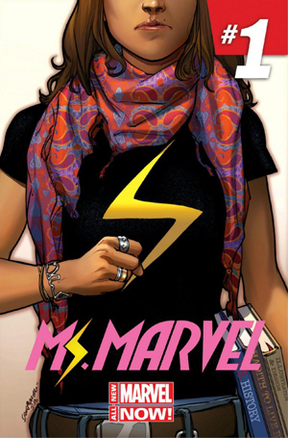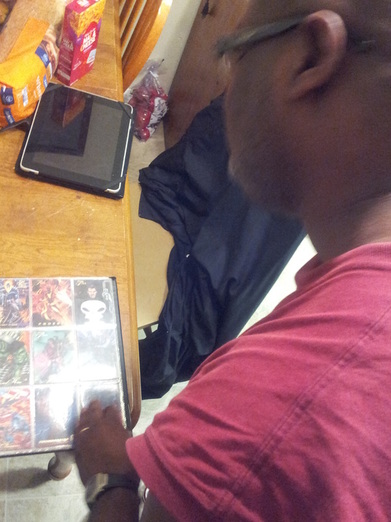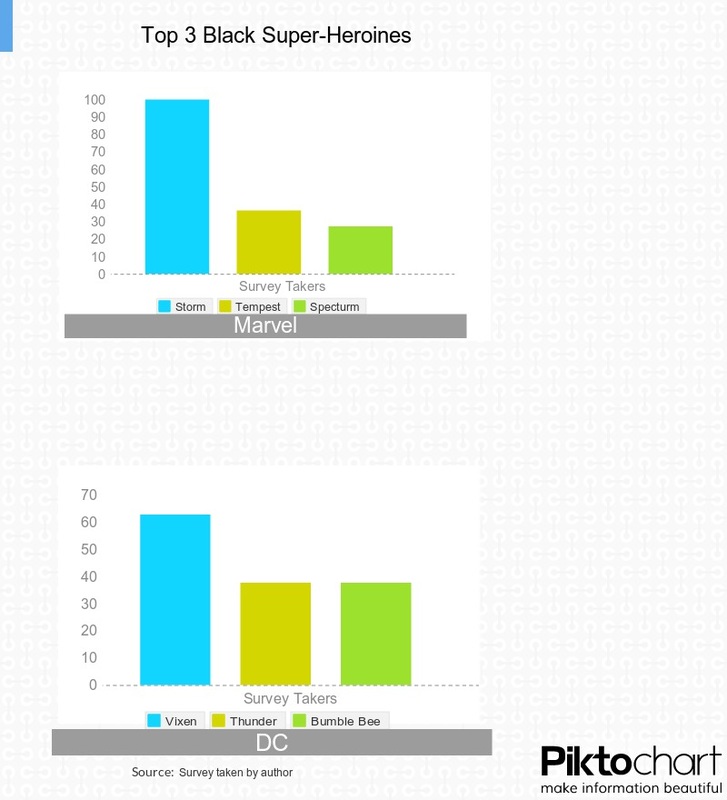Hannah Smith, journalism major at the Univeristy of Memphis. Memphis, TN. December 6, 2013
What do Batman, Superman, and the Flash all have in common? They're white guys. The new Ms. Marvel is not.
Introduced as Kamala Khan Captain Marvel #17, Kamala is a teenager, who lives in Jersey City. She's also a shape-shifting super-human, who struggles with teenage life in America as a Pakistani-American. Also fighting super-villains. Kamala is getting a proper debut in All New Marvel Now! #1 sometime in January of next year as the new Ms. Marvel.
Introduced as Kamala Khan Captain Marvel #17, Kamala is a teenager, who lives in Jersey City. She's also a shape-shifting super-human, who struggles with teenage life in America as a Pakistani-American. Also fighting super-villains. Kamala is getting a proper debut in All New Marvel Now! #1 sometime in January of next year as the new Ms. Marvel.

Kamala Khan is part of a growing population in popular comics: woman of color. She joins such characters as Storm, and Bumble Bee.
But things were different in the 1940's according to Stephen Tabachnick, an English professor at the University of Memphis, and an expert on graphic novels.
“It is not like there was nothing...it just was not proportionate. It was imbalanced.” Stephen Tabachnick edited the book “Teaching the Graphic Novel,” a series of essays on the topic of graphic novels.
Tabachnick talks excitedly with his hands, as he walked from his bookshelf to his desk, picking out books and showing examples of diversity in graphic novels. “Today, things are wide open, and it is very interesting,” he continues.
“Not every issue is open for discussion in the popular comics,” Tabachnick said. But graphic novels today explore topics such as race, and sexism because it is appealing to its particular audience. The popular comics sell content that is appealing to its audience, which are less controversial topics.
But things were different in the 1940's according to Stephen Tabachnick, an English professor at the University of Memphis, and an expert on graphic novels.
“It is not like there was nothing...it just was not proportionate. It was imbalanced.” Stephen Tabachnick edited the book “Teaching the Graphic Novel,” a series of essays on the topic of graphic novels.
Tabachnick talks excitedly with his hands, as he walked from his bookshelf to his desk, picking out books and showing examples of diversity in graphic novels. “Today, things are wide open, and it is very interesting,” he continues.
“Not every issue is open for discussion in the popular comics,” Tabachnick said. But graphic novels today explore topics such as race, and sexism because it is appealing to its particular audience. The popular comics sell content that is appealing to its audience, which are less controversial topics.
Tiffany Akin, a part-time English instructor, agrees.
“Representations of minorities and explorations of deeper cultural criticism are not geared toward the masses,” Akin said, who is also a graphic novel expert. “Popular comics and graphic novels are different due to their having to concentrate on pleasing their audience.” The masses read popular comics more than graphic novels, due to their appeal and content.
For instance, the Green Lantern from D.C. Comics is black in some of the comics, and was also black on the Cartoon Network TV show, the Justice League. But, when the Green Lantern movie came out, back in 2011, he was played by actor Ryan Reynolds, a white man.
The struggle for more woman of color in super hero comics and movies has experienced similar constraints. Of the seven superhero movies coming in 2014, only two have at least one super-heroines of color on their roster.
Kamala Khan is the first new woman of color comic book character to come out since America Chavez, the new Miss America for Marvel who was first introduced in 2011. The woman of color superhero has always been few and far between with each new comic debut.
“Representations of minorities and explorations of deeper cultural criticism are not geared toward the masses,” Akin said, who is also a graphic novel expert. “Popular comics and graphic novels are different due to their having to concentrate on pleasing their audience.” The masses read popular comics more than graphic novels, due to their appeal and content.
For instance, the Green Lantern from D.C. Comics is black in some of the comics, and was also black on the Cartoon Network TV show, the Justice League. But, when the Green Lantern movie came out, back in 2011, he was played by actor Ryan Reynolds, a white man.
The struggle for more woman of color in super hero comics and movies has experienced similar constraints. Of the seven superhero movies coming in 2014, only two have at least one super-heroines of color on their roster.
Kamala Khan is the first new woman of color comic book character to come out since America Chavez, the new Miss America for Marvel who was first introduced in 2011. The woman of color superhero has always been few and far between with each new comic debut.
 Gerald Smith looking through his collection of comic book cards
Gerald Smith looking through his collection of comic book cards Readers wish there were more.
“It is not too many of us out there,” said avid comic book reader, Gerald Smith. “Ain't nothing for me of interest, in terms of black characters.”
Smith has been reading comic books for over 30 years, and has seen many comic book characters change, and disappear. “The heroes I grew up with were white, but now some are black. Like Nick Fury.” Nick Fury, a comic book character created by Marvel, is the leading agent for S.H.I.E.L.D. He has been portrayed as a white man for many years, before he was changed to a black man back in 2001.
“Also, Luke Cage was a background character. But now he is the leader of the new Avengers!” Smith said.
Quinn McGowan, editor for Memphis based publishing company, Legends Press, is looking to change the idea of the traditional white and male superhero. “The construct isn't for us,” McGowan said.
McGowan, with his team, attended the Memphis Fantasy and Comic convention earlier this month. They had a booth set up, with an array of art pieces, sketches, and action figures, all designed for their comics, like WarBear or Battle Bunny. “We try to take those [images] that everyone can identify with.”
“It is not too many of us out there,” said avid comic book reader, Gerald Smith. “Ain't nothing for me of interest, in terms of black characters.”
Smith has been reading comic books for over 30 years, and has seen many comic book characters change, and disappear. “The heroes I grew up with were white, but now some are black. Like Nick Fury.” Nick Fury, a comic book character created by Marvel, is the leading agent for S.H.I.E.L.D. He has been portrayed as a white man for many years, before he was changed to a black man back in 2001.
“Also, Luke Cage was a background character. But now he is the leader of the new Avengers!” Smith said.
Quinn McGowan, editor for Memphis based publishing company, Legends Press, is looking to change the idea of the traditional white and male superhero. “The construct isn't for us,” McGowan said.
McGowan, with his team, attended the Memphis Fantasy and Comic convention earlier this month. They had a booth set up, with an array of art pieces, sketches, and action figures, all designed for their comics, like WarBear or Battle Bunny. “We try to take those [images] that everyone can identify with.”

 RSS Feed
RSS Feed